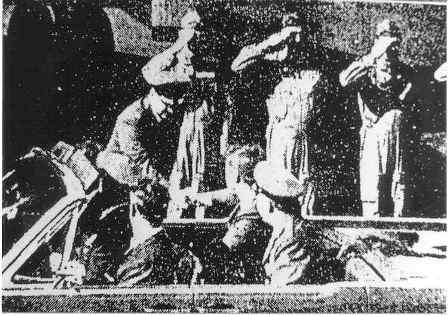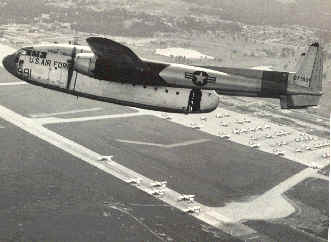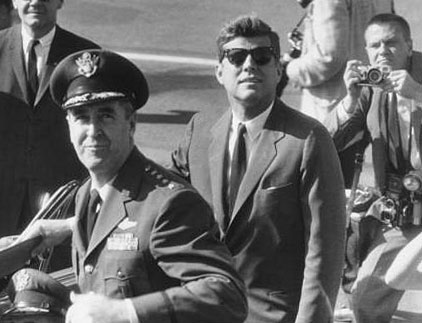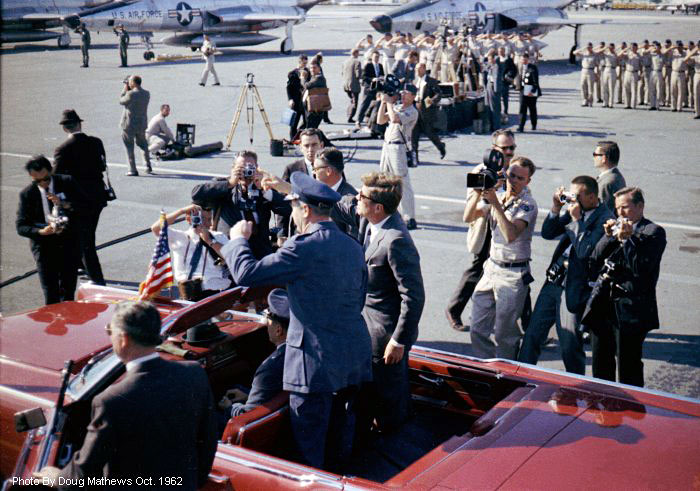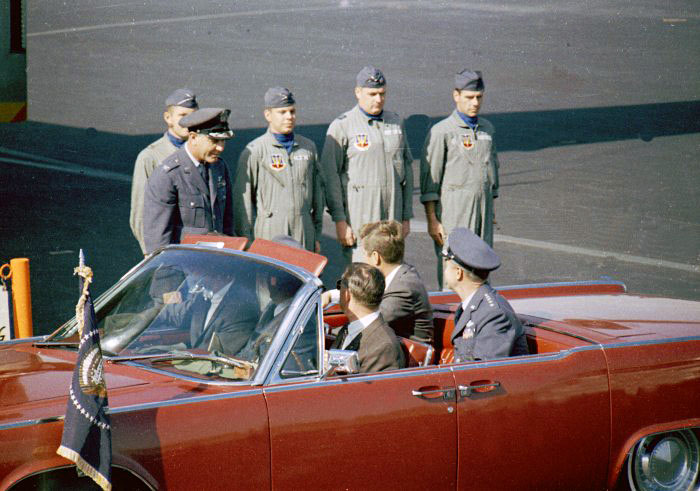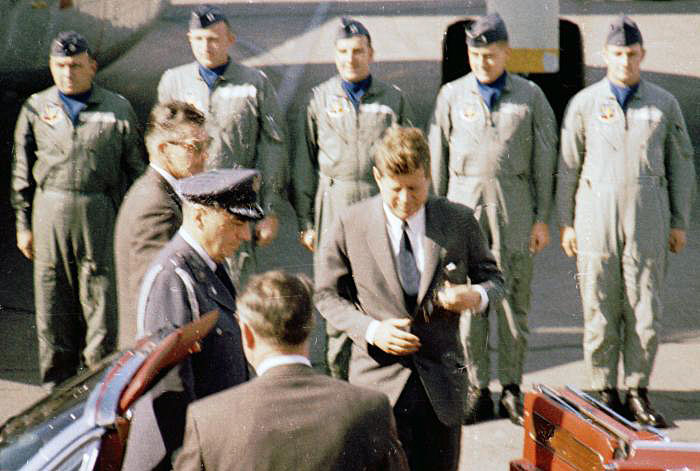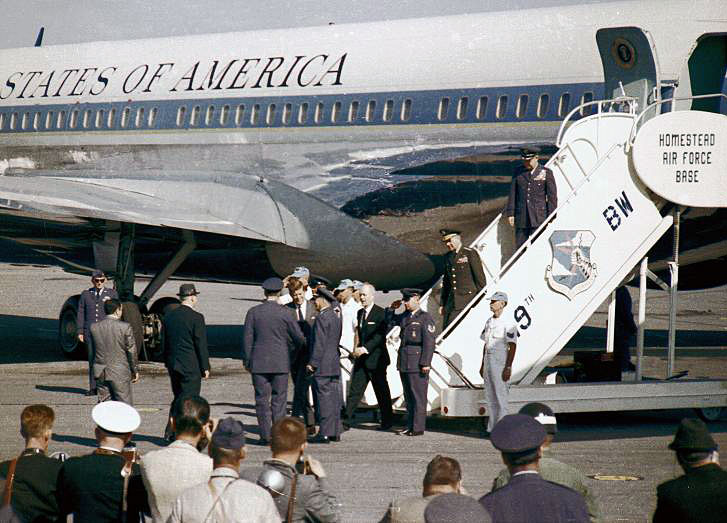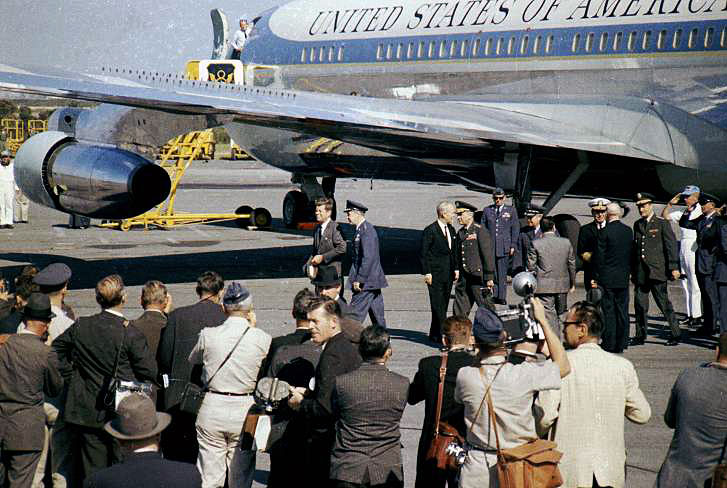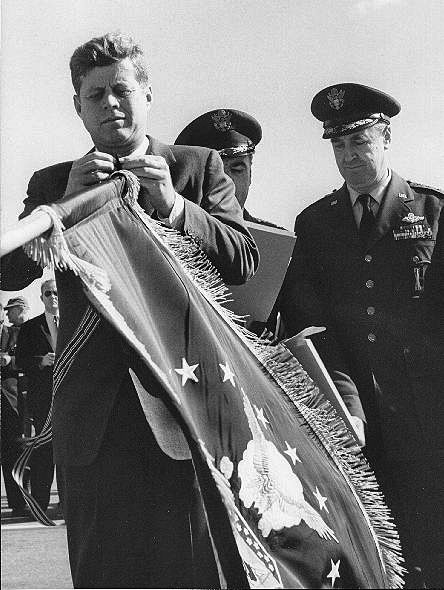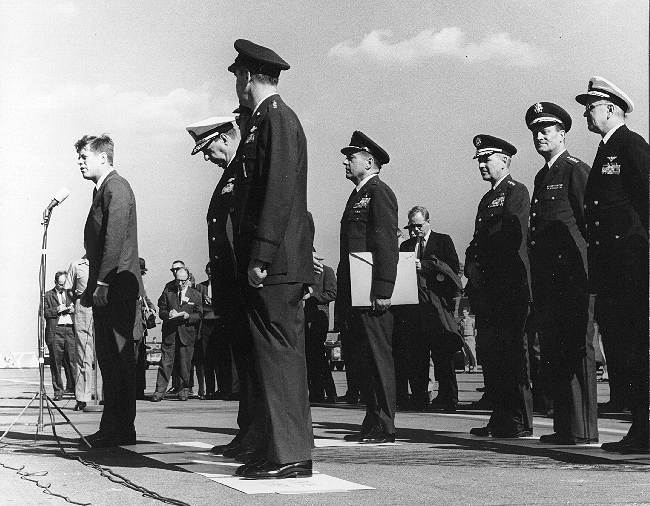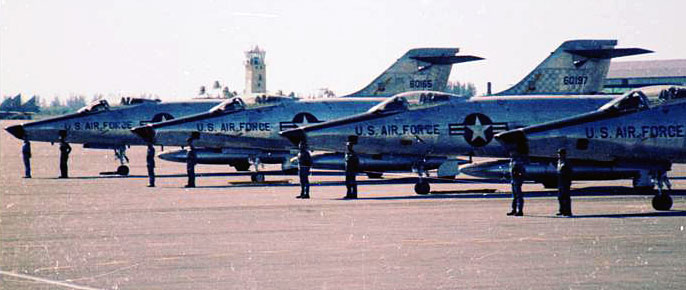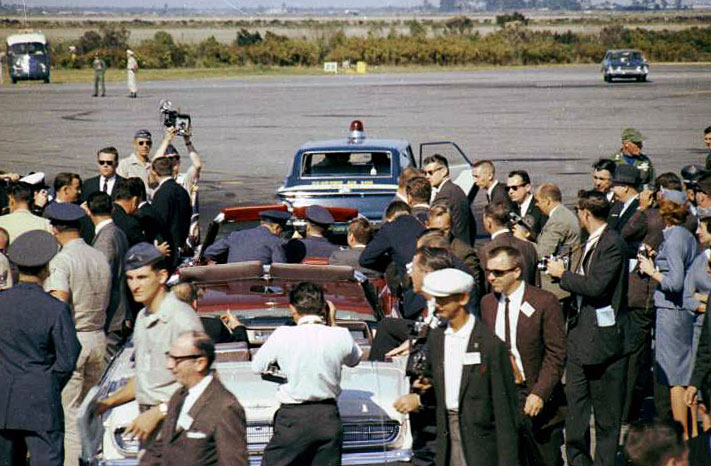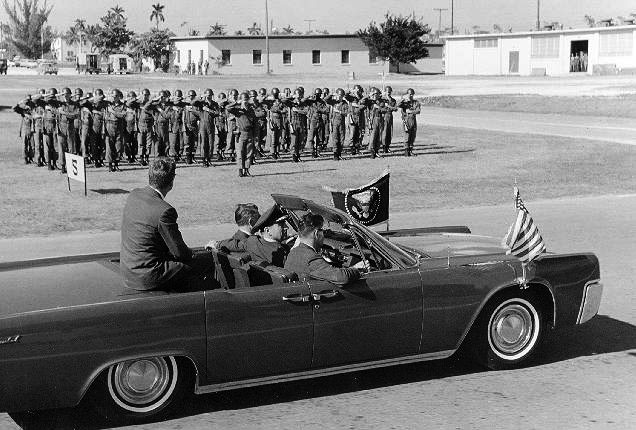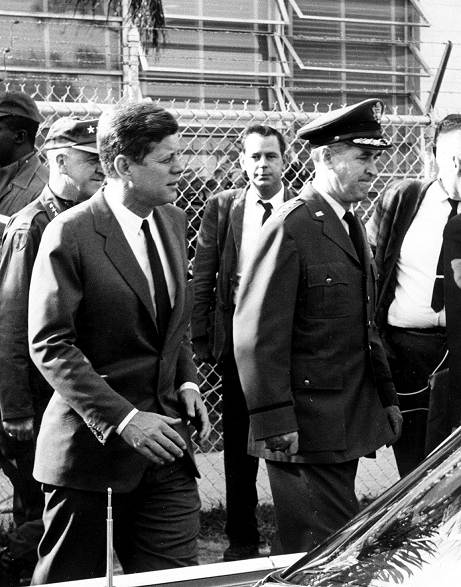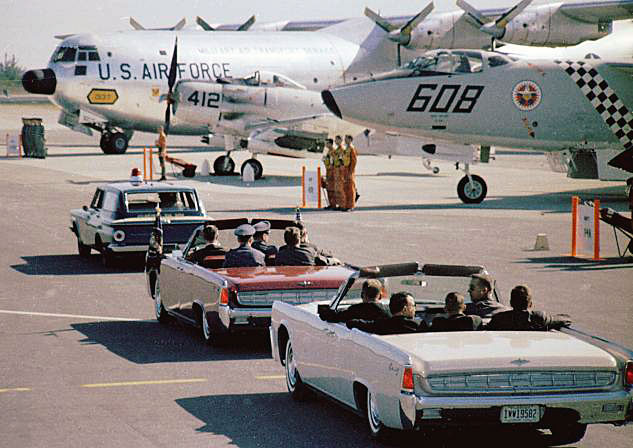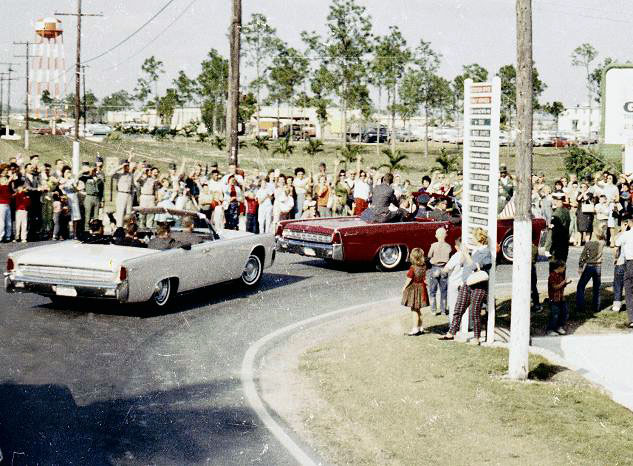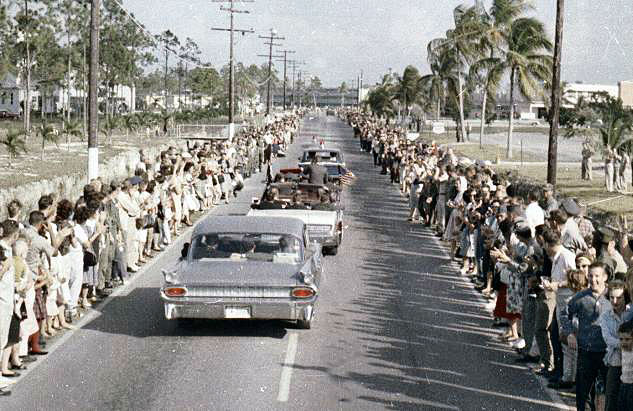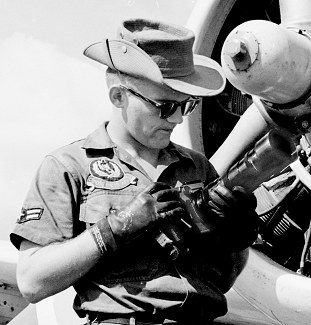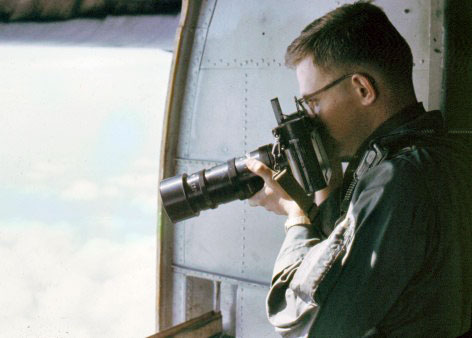Kennedy Honors 434th Airmen During The Cuban Missile Crisis
The 434th Troop Carrier Wing from Bakalar Air Force Base, Columbus, Indiana was mobilized in 1962 for the Cuban Missile Crisis. The closest the world has come to nuclear war was the Cuban Missile Crisis of October 1962.
|
Major General John W. Hoff (then Colonel) was Command Pilot of C-119G #952, Pilot was Lt. Colonel Joe T. Pound, Co-pilot, Major Norman Clifton, Navigator, Captain Donald Johnson, Flight Engineer, Staff Sergeant Ronald Wheeler and Assistant Flight Engineer, Airman Bart Dye. C-119J #037 is on display at Wright Patterson. C-119G #991 is shown in the photograph.
|
According to General Hoff's flight records, the C-119G #952 was in the air for 5 hours and 20 minutes from Bakalar Air Force Base Columbus, Indiana to Homestead Air Force Base, Florida on 24 November 1962 with a 5 hour 20 minute trip back on 26 November 1962 to attend the President Kennedy November 25, 1962 Homestead visit. General Hoff's records indicate that the 434th mission was released from active duty on 28 November 1962.
Museum volunteer Jim Alvis researched the National Archives and found a 16mm film of President John F. Kennedy reviewing a line of C-119s at Homestead Air Force Base on November 25, 1962. Jim transferred these frames of the movie to photos so we could show you this piece of history. We have not yet been able to identify the crews, but are working on that now. Can you help us ID these crews? We can see the aircraft number #935 in the first photo, stationed out of Willow Grove Air Force Base. (Click on images to view larger.)
photographs of President Kennedy by Doug Mathews
These photographs of President John F. Kennedy were taken by and given to the Museum by Doug Mathews who was an Air Force Combat Photographer assigned to cover the Cuban Crisis from Homestead Air Force Base, Florida.
President John F. Kennedy and Air Force One at Homestead Air Force Base. Photos by Doug Mathews, who indicated that most of the Joint Chiefs of Staff are in these photos.
photographs of President kennedy taken by Doug Mathews
These photographs taken by Doug Mathews at Homestead Air Force Base in October 1962.
The RF-101 recon aircraft flew missions over Cuba.
JFK looking at the camera and the masses of news people and photographers at Homestead Air Force Base, Florida.
JFK reviewing some Army troops at Homestead.
JFK reviewing some aircraft and crews at Homestead.
The Presidential motorcade at Homestead Air Force Base during the Cuban Missile Crisis. Notice the open top convertibles and how close the President is to the general public. That all ended in November 1963.
According to Air Force Combat Photographer Doug Mathews, you could not get near the Command Center during October, but when the President came, the gates opened up and everyone just walked in. The only thing Doug remembers is it was a room full of desks and phones with a little light in the middle of the dial.
